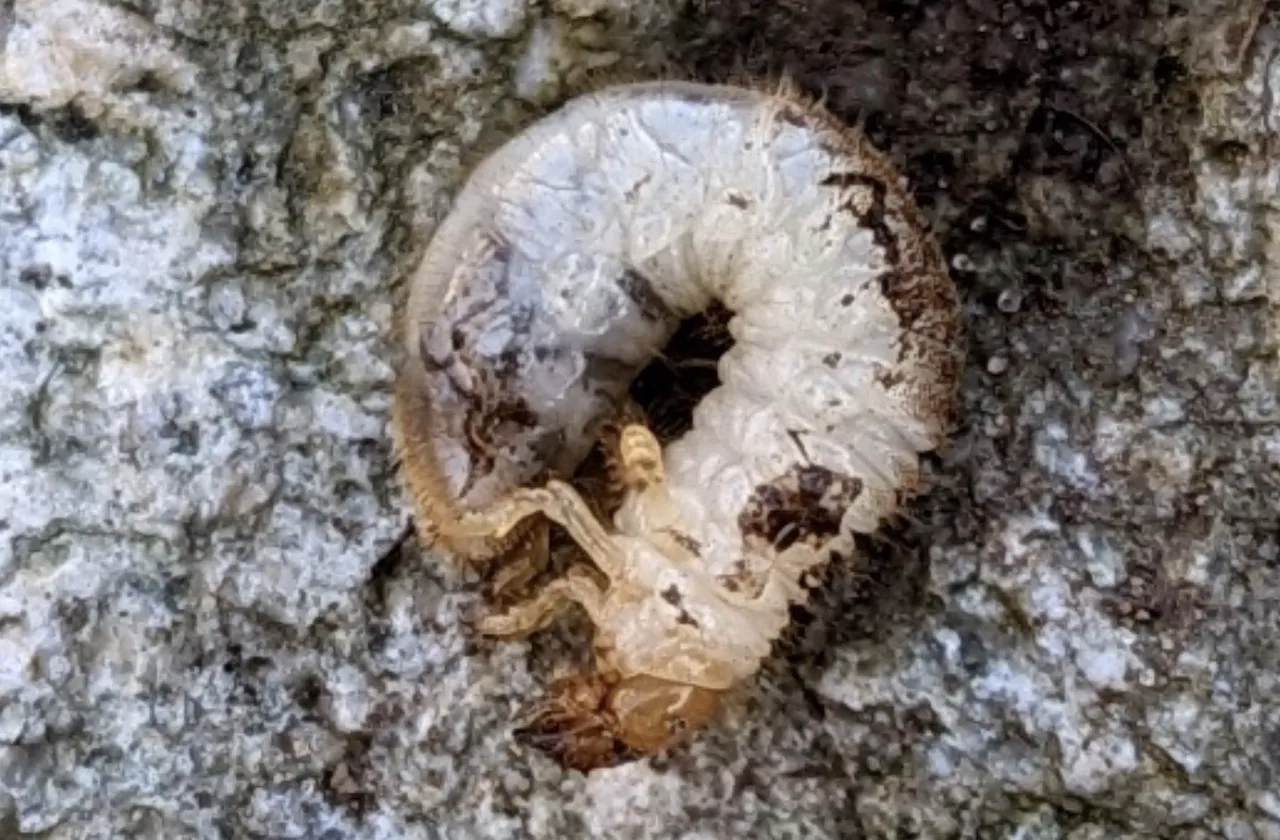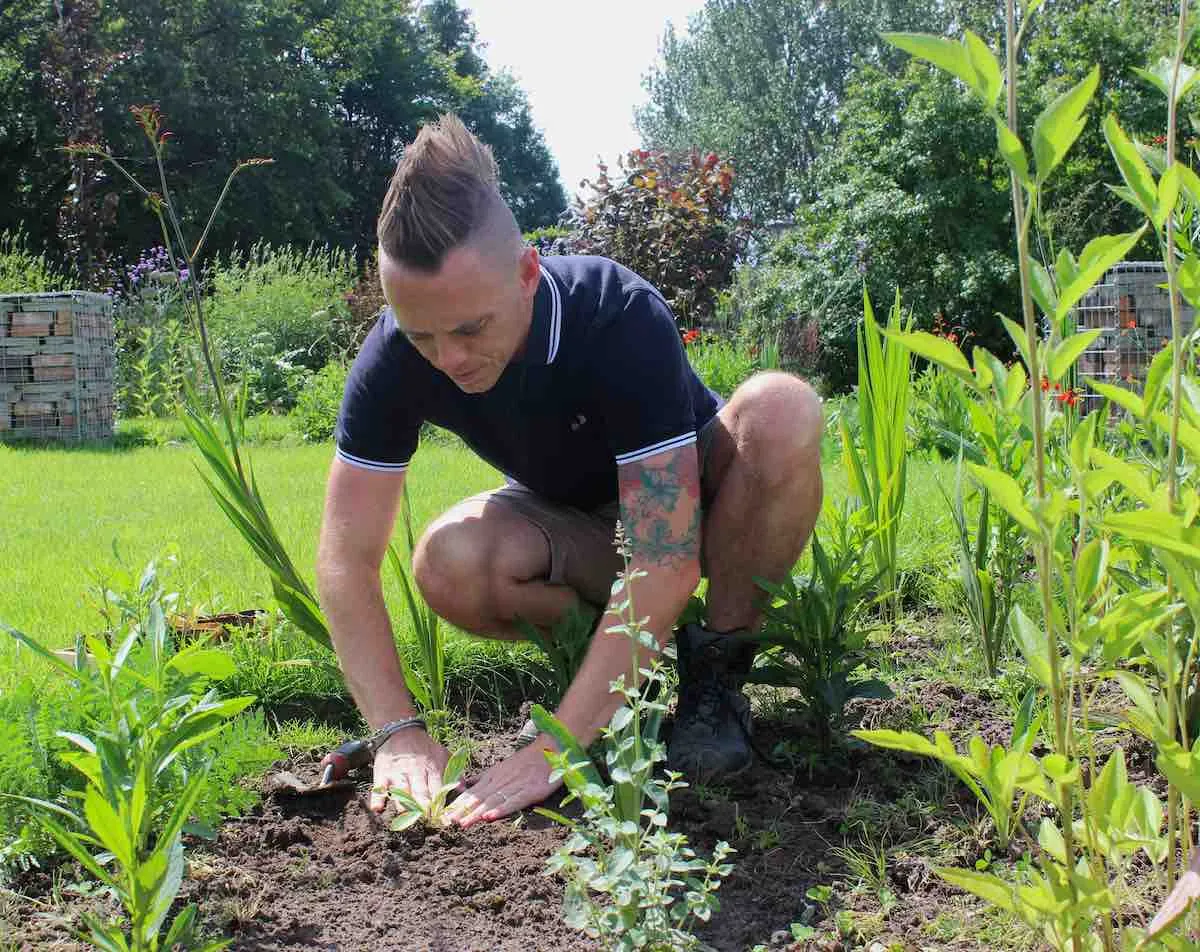Hi @joanna-louise
Thanks for the picures and comments. The mounds of soil are no bother; they're just earthworm casts and show great soil health so don't panic over these.
What causes grass to die off?
There are two probably causes looking at your pictures. The first is that there's too much shade there for that grass type. What I'd advise if choosing a shade-tolerant grass seed mix for those areas that will thrive in those shadier damp conditions. You can view shade tolerant grass seed here.
The second issue maybe chafer grubs.
What are translucent lawn grubs?
If you're seeing translucent bodies, you will likely have chafer grubs in your garden. These grubs can quickly cause damage in a lawn.
Chafer grubs are the larvae of various species of chafer beetles, including the common European chafer (Amphimallon majale) and the Japanese beetle (Popillia japonica). These white, C-shaped grubs are a common lawn pest, and they can cause significant damage to lawns and turfgrass.

Damage Caused by Chafer Grubs:
Root Feeding: Chafer grubs primarily damage lawns by feeding on the roots of grass plants. They chew on the grassroots, which weakens the grass and reduces its ability to take up water and nutrients from the soil. This results in brown, dead patches in the affected areas.
Turf Disruption: As chafer grubs feed, they tunnel through the soil, creating channels that can disrupt the structure of the turf. This leads to uneven and spongy lawns, making them susceptible to further damage.
Increased Vulnerability: Lawns infested with chafer grubs become more vulnerable to other stressors like drought, disease, and weed invasion. Weakened grass is less able to recover from such challenges which is why lawsn can look so messy.
Predator Attraction: Chafer grubs in the soil can attract predators like birds and hedghogs that dig up the lawn in search of a meal. This secondary damage can be particularly problematic as it causes a real mess in heavy infestations of chafer grub.
Identification and Signs of Chafer Grub Damage:
- Dead or dying patches of grass, often beginning in late summer or early fall.
- Loose, spongy turf that can be rolled back like a carpet due to damaged roots.
- Presence of adult chafer beetles, which are active in the evenings and may be seen flying around the affected lawn.
- Wildlife activity, such as raccoons, skunks, or birds, digging up the lawn in search of grubs.
Control and Management:
Preventative Measures: Healthy lawns are less susceptible to chafer grub damage. Maintain proper lawn care practices, such as regular watering, mowing, and fertilizing, to keep the grass strong.
Nematodes: Beneficial nematodes, such as Heterorhabditis bacteriophora and Steinernema carpocapsae, can be applied to the lawn to control chafer grubs. These are the best means of getting rid of them!
Early Detection: Keep an eye on your lawn for signs of damage and wildlife activity. Early detection can help address the problem before it becomes severe.
Aeration and Overseeding: In the aftermath of chafer grub damage, aerating the lawn and overseeding can help repair and rejuvenate the affected areas.
I hope that helps?
Lee
Hi @joanna-louise
Thanks for the picures and comments. The mounds of soil are no bother; they're just earthworm casts and show great soil health so don't panic over these.
What causes grass to die off?
There are two probably causes looking at your pictures. The first is that there's too much shade there for that grass type. What I'd advise if choosing a shade-tolerant grass seed mix for those areas that will thrive in those shadier damp conditions. You can view shade tolerant grass seed here.
The second issue maybe chafer grubs.
What are translucent lawn grubs?
If you're seeing translucent bodies, you will likely have chafer grubs in your garden. These grubs can quickly cause damage in a lawn.
Chafer grubs are the larvae of various species of chafer beetles, including the common European chafer (Amphimallon majale) and the Japanese beetle (Popillia japonica). These white, C-shaped grubs are a common lawn pest, and they can cause significant damage to lawns and turfgrass.

Damage Caused by Chafer Grubs:
Root Feeding: Chafer grubs primarily damage lawns by feeding on the roots of grass plants. They chew on the grassroots, which weakens the grass and reduces its ability to take up water and nutrients from the soil. This results in brown, dead patches in the affected areas.
Turf Disruption: As chafer grubs feed, they tunnel through the soil, creating channels that can disrupt the structure of the turf. This leads to uneven and spongy lawns, making them susceptible to further damage.
Increased Vulnerability: Lawns infested with chafer grubs become more vulnerable to other stressors like drought, disease, and weed invasion. Weakened grass is less able to recover from such challenges which is why lawsn can look so messy.
Predator Attraction: Chafer grubs in the soil can attract predators like birds and hedghogs that dig up the lawn in search of a meal. This secondary damage can be particularly problematic as it causes a real mess in heavy infestations of chafer grub.
Identification and Signs of Chafer Grub Damage:
- Dead or dying patches of grass, often beginning in late summer or early fall.
- Loose, spongy turf that can be rolled back like a carpet due to damaged roots.
- Presence of adult chafer beetles, which are active in the evenings and may be seen flying around the affected lawn.
- Wildlife activity, such as raccoons, skunks, or birds, digging up the lawn in search of grubs.
Control and Management:
Preventative Measures: Healthy lawns are less susceptible to chafer grub damage. Maintain proper lawn care practices, such as regular watering, mowing, and fertilizing, to keep the grass strong.
Nematodes: Beneficial nematodes, such as Heterorhabditis bacteriophora and Steinernema carpocapsae, can be applied to the lawn to control chafer grubs. These are the best means of getting rid of them!
Early Detection: Keep an eye on your lawn for signs of damage and wildlife activity. Early detection can help address the problem before it becomes severe.
Aeration and Overseeding: In the aftermath of chafer grub damage, aerating the lawn and overseeding can help repair and rejuvenate the affected areas.
I hope that helps?
Lee
 Lee Burkhill: Award Winning Designer & BBC 1's Garden Rescue Presenters Official Blog
Lee Burkhill: Award Winning Designer & BBC 1's Garden Rescue Presenters Official Blog



